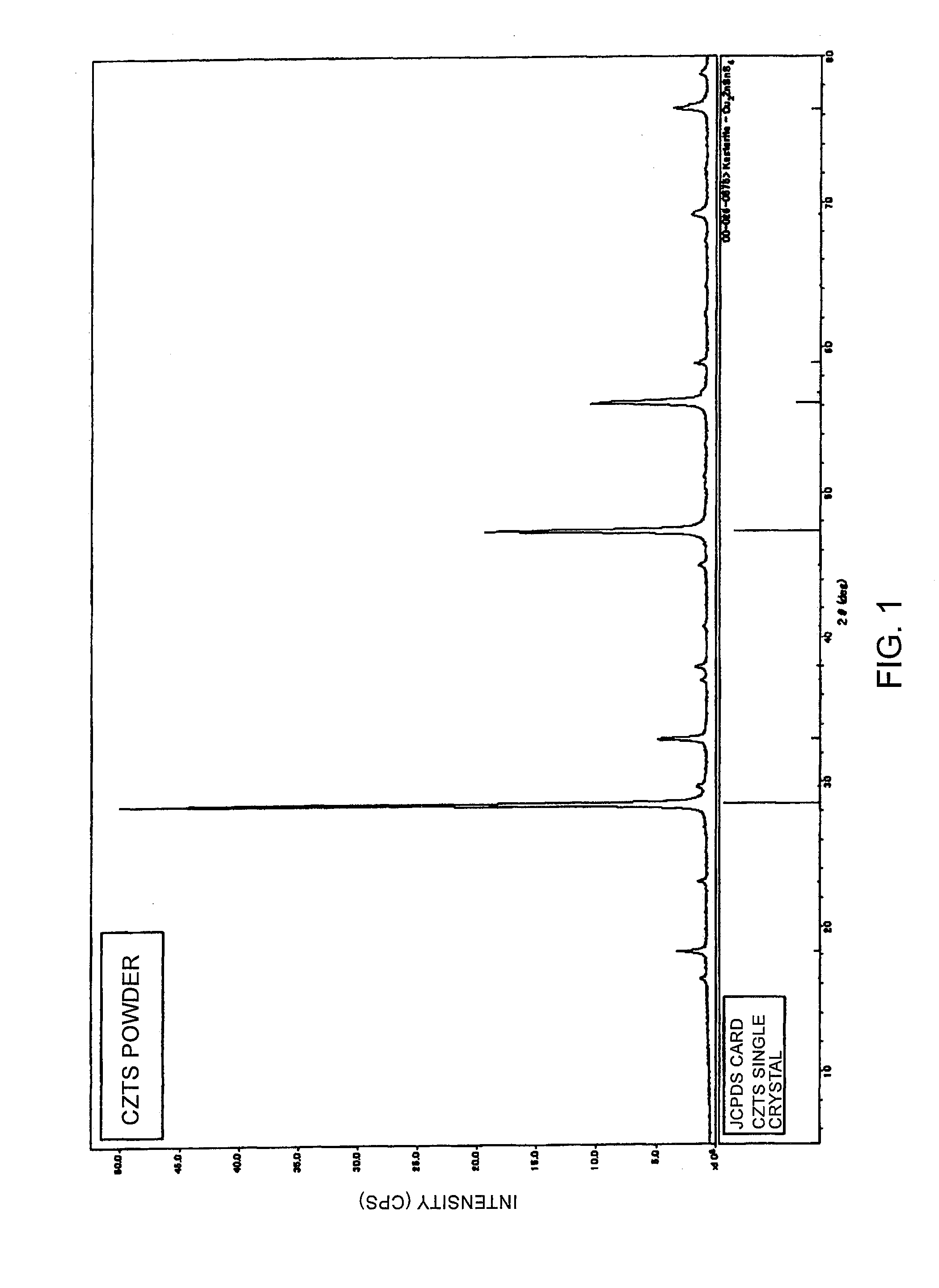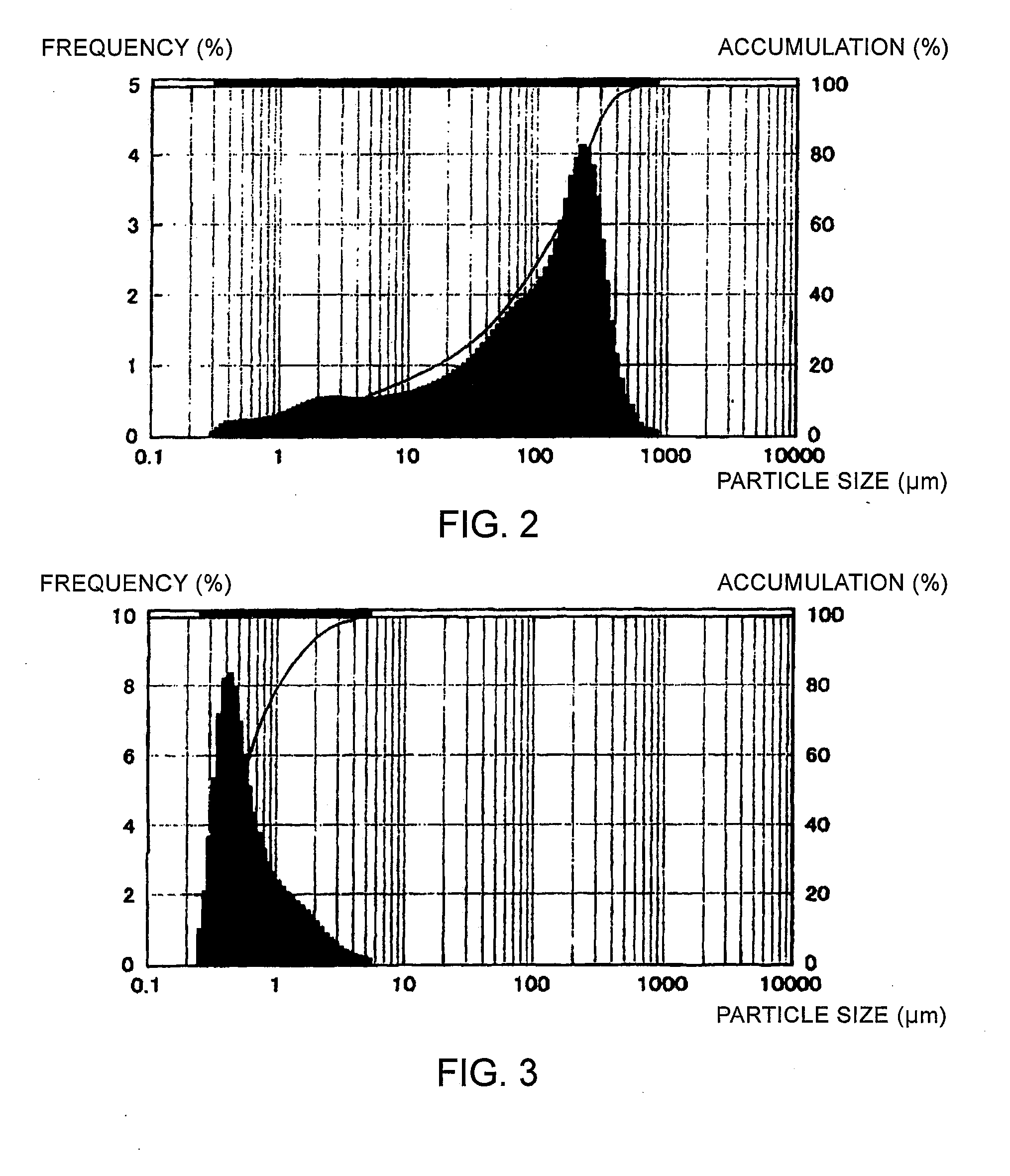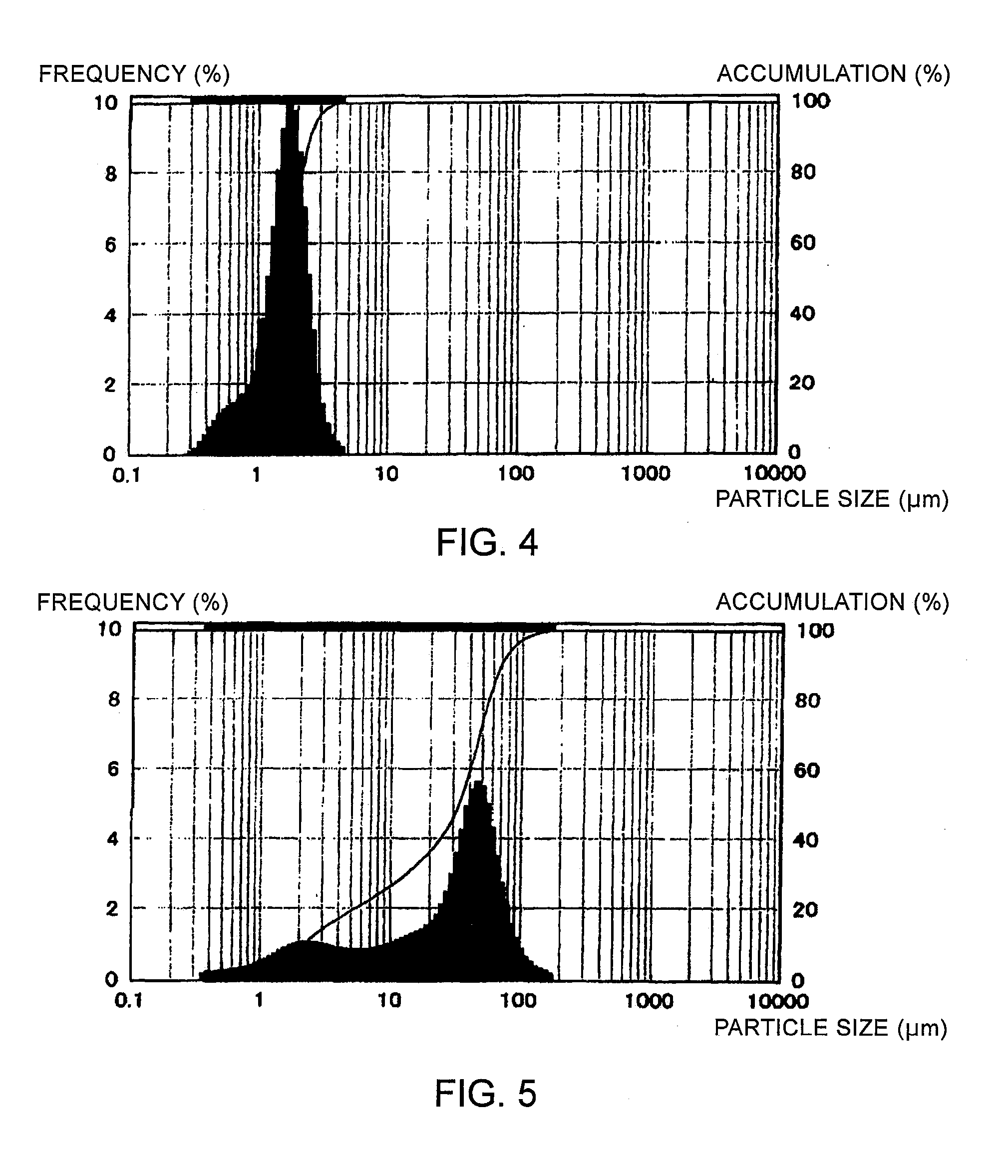Semiconductor Powder and Method for Producing the Same
a technology of semiconductors and powders, applied in the field of semiconductor powders, can solve problems such as unsuitable industrial us
- Summary
- Abstract
- Description
- Claims
- Application Information
AI Technical Summary
Benefits of technology
Problems solved by technology
Method used
Image
Examples
example 1
Preparation of CZTS Semiconductor Powder
[0058]22 ml of tin sulfate aqueous solution of pH 1.1 containing 5.06 g of tin sulfate dissolved therein was added to 40 ml of 20 mass % ammonium sulfide aqueous solution of pH 10.0, and was then stirred for 15 minutes to obtain a mixture liquid of pH 9.8. Subsequently, 14 ml of zinc sulfate aqueous solution of pH 4.5 containing 6.77 g of zinc sulfate heptahydrate dissolved therein was added to the mixture liquid, and was then stirred for 15 minutes to obtain a mixture liquid having a pH of 9.6. Further, to this mixture liquid, 80 ml of copper sulfate aqueous solution of pH 3.5 containing 11.76 g of copper sulfate pentahydrate dissolved therein was added to obtain a mixture liquid of pH 9.3. The mixture liquid thus obtained was subjected to neutralization by adding 2.8 ml of concentrated sulfuric acid, to obtain a preparatory liquid of pH 7.5. The Cu:Zn:Sn:S ratio in the preparatory liquid was about 2:1:1:5. The mixture liquid was stirred for ...
example 2
Particle-Size Control of CZTS Semiconductor Powder
[0060]The CZTS semiconductor powder obtained in Example 1 was subjected to either one of the following steps to control the particle size, followed by the measurement of the particle size distribution using a laser diffraction / scattering particle size distribution measurement device (Microtrac MT3200 (WET), Nikkiso Co., Ltd.):
[0061]Step 1: the powder was pulverized by a jet mill (KJ-25, Kurimoto, Ltd.) under the conditions of a classification rotor frequency of 300 Hz and a pulverization pressure of 0.5 MPa, and then recovered by a bag filter;
[0062]Step 2: the powder was pulverized by a jet mill (KJ-25, Kurimoto, Ltd.) under the conditions of a classification rotor frequency of 300 Hz and a pulverization pressure of 0.5 MPa, and then recovered by a cyclone separator; or
[0063]Step 3: the powder was passed through a sieve with apertures of 75 μm while being crumbled in a mortar.
[0064]The particle size distribution data obtained for the...
example 3
Preparation of CZTS Semiconductor Powder Having Various Cu:Zn:Sn:S Ratios
[0065]Preparation of each Cu2ZnSnS4 (CZTS) semiconductor powder and XRD analysis were conducted in the same manner as in Example 1 to obtain XRD charts shown in FIGS. 6 and 7, except that each additive amount of the raw materials was adequately changed so that the Cu:Zn:Sn:S ratio in the preparatory liquid could be about 2:1:1:4 and about 2:1:1:10 respectively. FIG. 7 is an enlarged chart showing the circled portions in FIG. 6. FIGS. 6 and 7 also show, for reference, the XRD chart obtained on the sample of the Cu:Zn:Sn:S ratio of about 2:1:1:5 obtained in Example 1. As apparent from FIGS. 6 and 7, the sample resulting from the preparatory liquid having the Cu:Zn:Sn:S ratio of about 2:1:1:5 exhibited roughly the same peak behavior over the entire diffraction angles as the sample of the Cu:Zn:Sn:S ratio of about 2:1:1:5 in Example 1. In contrast, the sample resulting from the preparatory liquid having the Cu:Zn:S...
PUM
| Property | Measurement | Unit |
|---|---|---|
| Acidity | aaaaa | aaaaa |
| Particle size | aaaaa | aaaaa |
| Electrical conductance | aaaaa | aaaaa |
Abstract
Description
Claims
Application Information
 Login to View More
Login to View More - R&D
- Intellectual Property
- Life Sciences
- Materials
- Tech Scout
- Unparalleled Data Quality
- Higher Quality Content
- 60% Fewer Hallucinations
Browse by: Latest US Patents, China's latest patents, Technical Efficacy Thesaurus, Application Domain, Technology Topic, Popular Technical Reports.
© 2025 PatSnap. All rights reserved.Legal|Privacy policy|Modern Slavery Act Transparency Statement|Sitemap|About US| Contact US: help@patsnap.com



